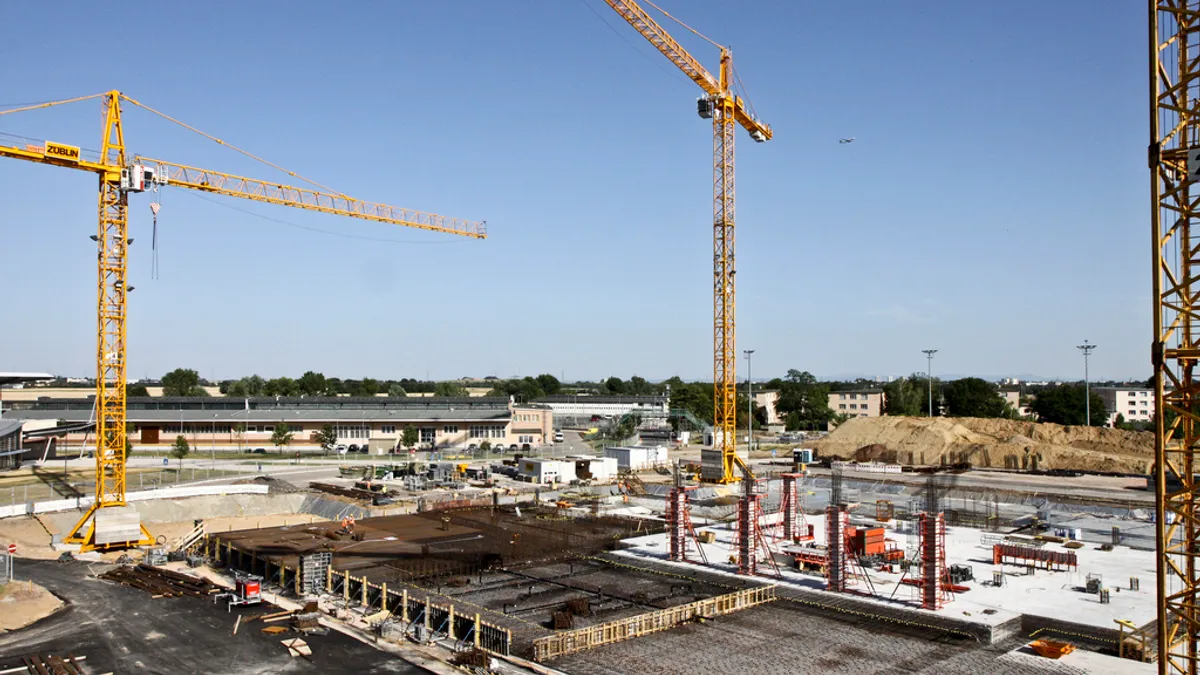Dive Brief:
- Construction spending fell 0.2% in December to a seasonally adjusted annual rate of $1.182 trillion, below the revised rate of $1.184 trillion in November, the Commerce Department reported Wednesday.
- Private residential construction grew 0.5% in December, while private nonresidential construction remained stagnant from November. Within residential, single-family rose 0.5%, while multifamily increased 2.8%. Public construction fell 1.7% between November and December.
- December’s construction spending figure came in 4.2% above the December 2015 mark, and 2016’s overall spending was 4.5% higher than it was in 2015.
Dive Insight:
December’s slowdown in spending comes on the heels of a November peak that marked the highest level of construction spending since April 2006. While spending saw a post-recession high in November, December’s figures still represented a strong showing.
Construction spending overall in 2016 coasted under analyst predictions, but December ended the year on a high note with a resurgence in housing starts, due largely to growth in the multifamily sector. While a tight regulatory climate and prolonged labor shortage could undercut the effects of the recent boost in new construction activity, economists forecast upward growth for 2017.
Late last year, Dodge Data & Analytics predicted a 5% increase in starts for the coming year, totaling $712.9 billion for the industry. Areas, particularly the Sun Belt, with robust job growth prompting an influx of people and an increasing demand for new construction, are slated to see the most sizable hike in construction.
Industry observers began the year cautiously optimistic about 2017’s prospects for construction growth, due, in part, to the Trump administration’s proposal of a $1 trillion infrastructure spending plan. Senate Democrats countered with their own $1 trillion plan in late January, opening up the issue of funding the project in an already rigid partisan gridlock. The 10-year plan would focus on U.S. ports, bridges, roads, airports, broadband networks, schools and Department of Veterans Affairs hospitals.
The construction of the U.S.-Mexico border wall and the Keystone XL and Dakota Access pipelines, along with Trump’s order to fast-track future projects and his list of the country’s infrastructure needs stand to significantly impact the industry in the coming years. Those in construction are hopeful the projects will inject much-needed federal funding back into the industry and, with the potential easement of regulations, could jumpstart backlogged projects.












